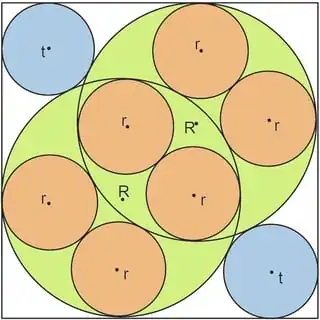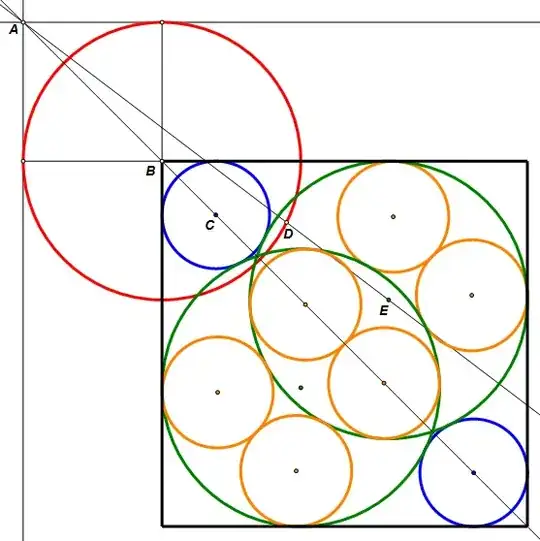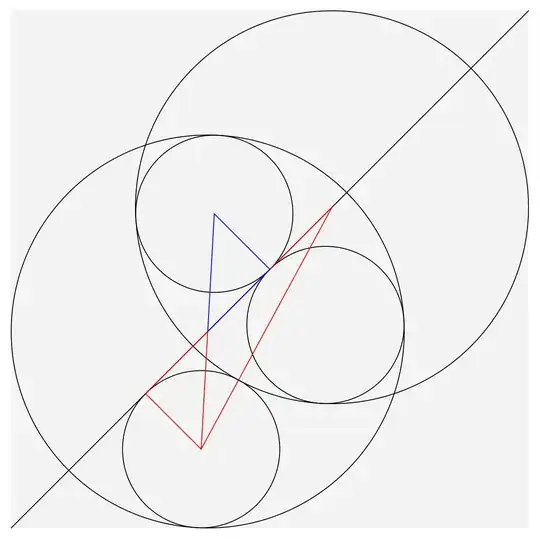Let us embed $2$ large intersecting circles of radius $R$ into a square as depicted by the figure below. These two circles are highlighted green. Into these $2$ circles we embedd $6$ smaller ones of equal radius $r$ (highlighted orange).
Finally we have $2$ circles of the same radius $t$, which both touch the large (green) circles and the square.
How we can find a formula that calculates the radius $r$ of the $6$ small circles when inputting the radius $t$?
One idea to proceed might be to define a distance $d$ from the center of one of the large (green) circles to the point at which the large radius $R$ is touching one of the small (orange) circles. Then at least we would get the Pythagorean triangle equation $r^2+d^2=(R − r)^2$ as a possibly useful starting point:



